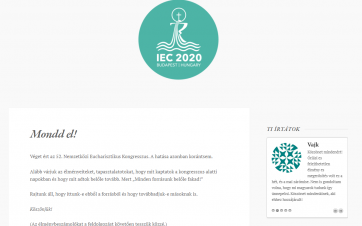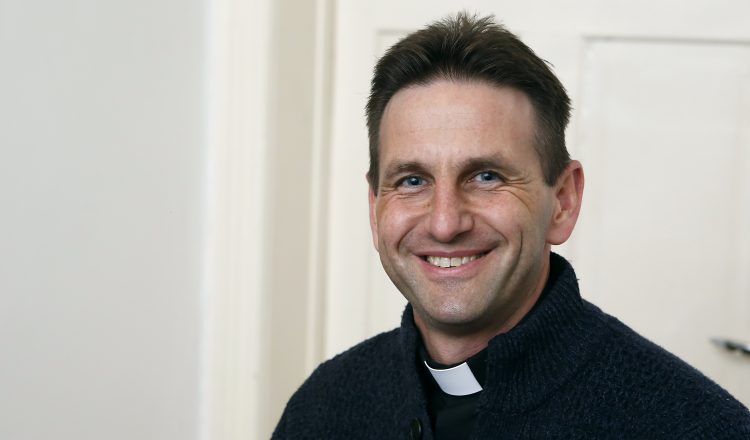
The saint is not holy for always doing the right thing

- The extra one year to go until the International Eucharistic Congress means a gift both for the organisers and also for the participants. How can you familiarise rather small kids with the Eucharist in a school environment?
- When I got word on the postponement of the Budapest World Meeting I immediately knew that we have received a priceless opportunity to make us even more prepared for this great event after all. Being a school pastor tried to adjust the pretty hard topic of the Eucharist both to the Catholic high school, the primary school and to the nursery environments. As for the small kids I started the approach with the bread, being the primary material of the Holy Eucharist. For many children of our times, the bread is known only from shop shelves, so I decided to make the first step with the wheat grains, through which we let them get a further experience.
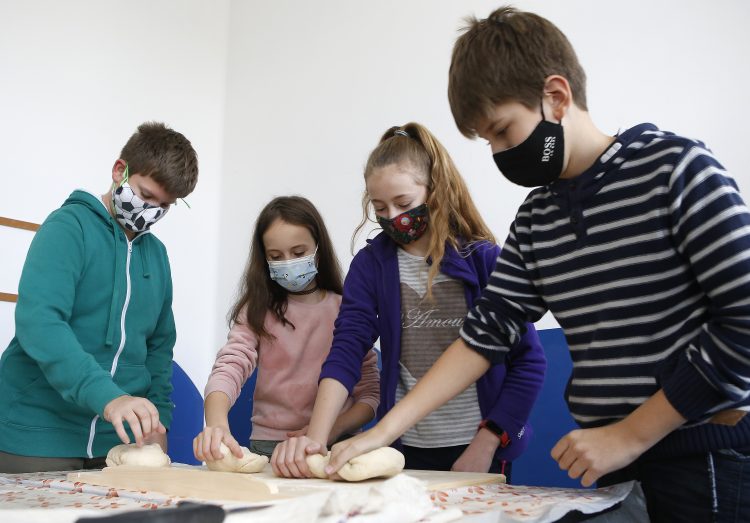
- Are these children led from the grain to the set table?
- We paid a visit to a renovated, working watermill, where students could follow the way of the wheat, how it turns into flour. Afterwards, they kneaded dough themselves, leavened it, and finally baked it into small loaves. They experienced all the work both nature and man had put into. It was not by chance that Jesus had chosen as means of his presence an ingredient of a kind that also contained tremendous human work, clearly expressing that he invited the man to be his cooperating partner. Thereafter, Jesus added something unique to the bread, thereby transforming it to His own body that we, humans would never be able to do so. Consequently we get nowhere without Him.
Man and God in cooperation
- This region is the birthplace of one of our most popular saints, notably St. Elizabeth of Hungary, whose life was marked by charity: e.g. supporting the vulnerable, the needy and the sick, or the bread distribution.
- Indeed, St. Elizabeth was born in this region. Thus no wonder that here the bread itself has a far stronger meaning than elsewhere, and so the thought of serving love and charity have got a significant role in the bread baking event. It was so heart-warming to attend the Eucharistic rose planting event that was carried out by the little kids and the teens together. This was a meeting between the primary students’ breads and the high school students’ minds. Upon St. Elizabeth’s example – she is often illustrated with roses in her apron- we could experience the power of man in this world, who is in close cooperation with God.
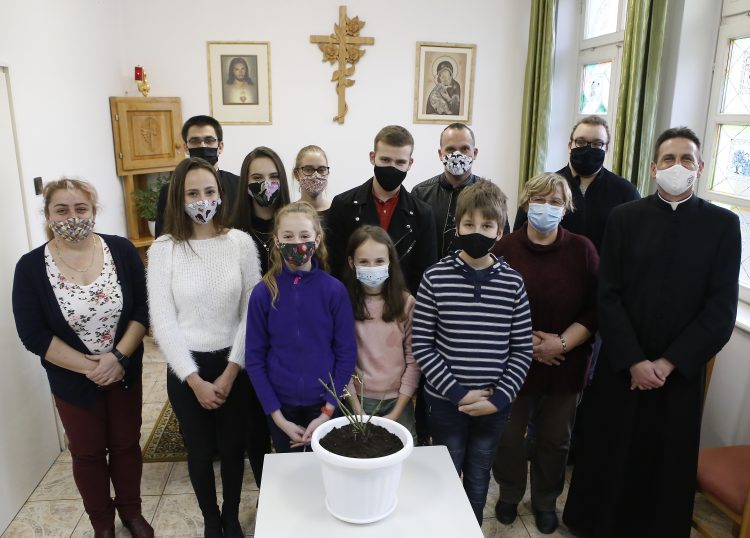
- In what kind of approach do the teenagers meet the Eucharist?
- High school students are already receptive to abstractions, thus to begin with, we have discussed the sacrifice character of the Eucharist. Then we moved to its transforming effect, whereby a believer, taking the sacrament regularly, sooner or later breaks and divides himself as well for the sake of others. The recently beatified Italian teenage boy Carlo Acutis’ life helped us a lot to go through this recognition. Upon watching the film on his story students highlighted one or two episodes from Carlo’s life that impressed them the most, then summarized how and on what way they could make a testimony on Christ within their own generation. Methodically there were two diverse adaptations, since the smaller kids were in need of having a more concrete experience so to understand and recognise the message. The ones, being just prior to their high-school graduation are deliberately placed into situations in which a reflection on themselves is a must. We invite them to a conscious life and to a courageous witness so as to avoid “swimming with the flow”, but rather to fight and work for others along the magnetism of values. Both the small kids and the teens have made a step forward the mystery so to recognise and understand what the Eucharist means for them.
As a priest it’s a rather good deal to be a “normal” person
- You are dealing with the youth’s spiritual care for a while. What do you see as its greatest challenge?
- Nowadays we live in a world overflooded with information and opportunities. Digital devices bring the entire world into the rooms of the youth. There is a risk that faith and religion will become just an option amid the “services” available. Today it’s hard to dazzle a young with anything, since there is always something even more extreme. When they are invited to an event, the attendance is floated for a long time, since they do not know themselves yet, what to accept at the very last moment from the numerous available alternatives. However, even in this environment a success is not at all a mission impossible. After a while the invaluable starts to sicken them, so they don’t bother themselves wasting more time on it.
- Hence, something interesting, worthwhile and exciting needs to be offered as a program?
- If we are able to make them wonder, then we are on the right path. Following the “Ask the priest!” evenings in Miskolc (Hungary), many came to me for spiritual talks, which obviously would have never happened if we fathers, pastors did not sit in with them for a chat in a pub. Many times I have experienced that being a “natural, normal” person as a priest has definitely paid off, since it has raised awareness and induced many conversations.
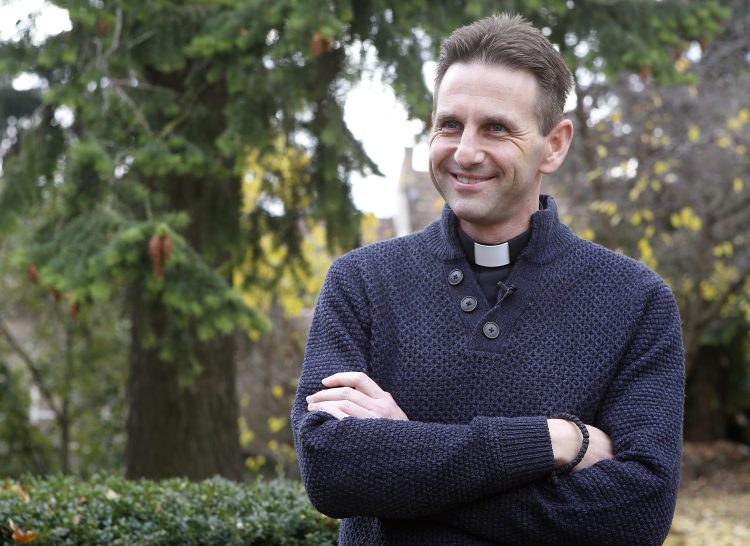
- How can you keep alive the interest for a long term in such an information turmoil?
- Well, that is a real challenge, topped with the fact that each young person is invited for a long term duty, not to mention that a spiritual life does not result in success all of a sudden, from one day to the other. We should let them experience, or make them feel that it is a far greater joy to overcome a sin, to change a bad habit, to get rid of a redundant addiction or to leave behind following the fake god that has stolen one’s freedom and dignity, that had ever been offered by all these above. Christ is the only one who can fulfil the yearnings, whose service is not at all humiliating, but rather exhilarating instead. And with whom one can really remain a person of its own.
- Quite often we hear that the new generation needs ideals. We like to present the saints’ life as a model to follow. How do teenagers and believers in general relate to the saints?
- Maybe the Church itself has also made some mistakes, by presenting the saints’ figures and lives in a manner that had left out every embarrassing, imperfect moment, so to picture a perfect personality, always being aware of what to do, while understanding God’s will in a flash.
In reality, however, holiness of life is not a static, all at once available potential, but rather a slowly unfolding virtue, full of hard fights and sometimes with bumps into blind alleys. The saint is not holy for always doing the right thing, but is holy for the intention of never giving up the path of perfection. A saint wants to be more and better by each day, so to overcome the previous day. A saint’s life never flattens out. Moreover, a saint is perfectly aware of –seeing his own weaknesses – that all these cannot be achieved alone. Thus God is called for help and is let into the saint’s life. In fact, the leading role is deliberately handed over to God. Let’s not forget: being a saint on this earth does not ever mean the arrival to the destination – as if there were an earthy Eden – rather it is more of being on the road that leads and pulls us along to the direction of the destination.
Should we present the holiness of life and the saints in this way to the new generation, they will find a great deal of interconnections with their own inner and external struggles, uncertainties. Help is favoured and welcomed. It is important to let them see the Lord as a partner, who is there to help their life, shows guidance, gives assistance in their personal development and ensures strength in their struggles. Nothing is taken away (except for what they are not in need of), God wants to give them the ALL.
We have to pull ourselves together!
- What are the youth’s expectations, what do they expect from the Church? Has there been a dialogue between the parties on the topic?
- As seen today, a sound dialogue is going on between the Church and the youth, at every level, as from the catechism class up to the Holy Father’s meetings. We would like to better understand their thoughts, motives, and the impressions they get, so as to pass over the very same 2000 years old message, surely avoiding the old fashioned expressions and methods, through their channels, in their language. However, the Gospel must not be stupid safe tailored, thereby despising the youth. There is a need for radical engagement even today. If we are not ready to offer this – for fear of frightening them- then others will do so. After all, in order to let the message reach the new generation, we cannot talk over their heads. We should be well familiar with the environment they are living in and communicating, so as to enlighten it with Jesus’ Gospel. No doubt, that Saint Paul, the one who was writing letters back in the day, nowadays would be a vivid internet user to communicate.
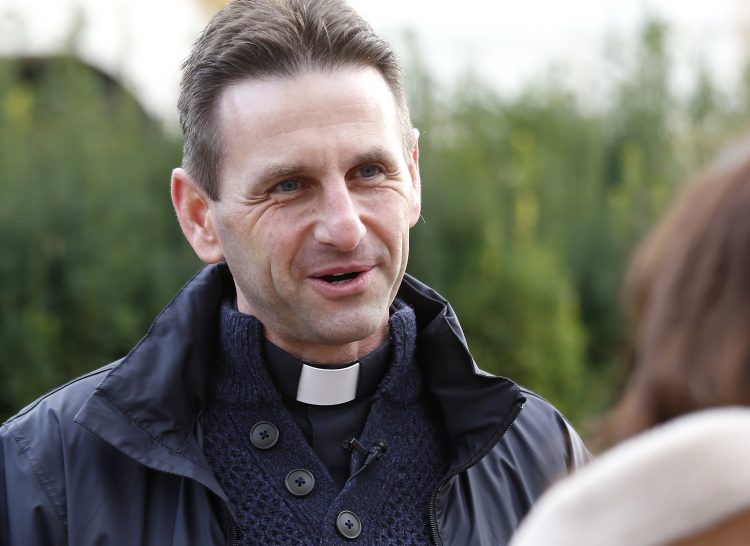
- How is it possible to find the same language, the method so that young people get the impression of not being the object, rather the subject of the evangelization? How do you show that their pastor teacher can offer, hand in hand with faith and religion, a partnership all along their path?
- I find it a special grace that Lord God first directed me toward a teaching career, enabling me to become a professor of chemistry and divinity. I’ve been a teacher for 16 years by now, out of which 10 years in a Catholic high school, daily facing the challenges set up by the generation of the time. Having talked with the students both as a director and nowadays also as a teacher, a clear picture has been outlined that the youth is in extreme need of to be listened to and be paid attention to. They highly respect those who treat them equal, as partners, and invite them for cooperation. The tutors, still being on their journey, and considering themselves as a lamb of a larger herd, are greatly admired. It is important to let them see: I myself bow down at the feet of someone far greater, and I’m also in need of help from a higher power. This nexus system can open up many locks in the hearts and souls of the young people. This way we can be more effective in lending a helping hand, while learning a lot from them.
- Budapest will host the Catholic World Meeting next September. What does it mean, and what is the message of such an event in the 21 st century?
- I have always taken the world meetings as of utmost significance. I have attended three international youth meetings so far (Rome, Madrid, Krakow), and practically I’m always there at the meetings of Nagymaros and Egerszalók (both in Hungary). I send my special thanks to the IEC team for both of their “Forráspont” events, giving a lifelong adventure and memories not only for my teenage students but for me as well. At a meeting like this we can experience how many like-minded people can be found around us.
Maybe because we are a bit quieter than others, and we might have the impression that Christ is not that much attractive to many, and then comes an event alike to “Forráspont” making us amazingly discover the huge demand for the Christian virtue. Goes without saying that we also have to pull ourselves together. The local communities are just perfect for providing such opportunities. Our diocese is very active in preparing itself for the IEC.
Lectures in theology, films, slide shows, recalling the 1938 Congress, the “Misevlog” (MassVlog), the Eucharistic adoration, just to mention a few of our activities. We have placed an event day counter, we are preparing for a street flashmob to be performed 100 days prior to the event. The Diocesan Representative Body’s working groups (liturgical, family, charity and media groups) are drawing up individual plans. We would like to make up the missed “Nights of the Churches” and the “Ars Sacra” days, while grabbing as many as possible opportunities to show our parishes’ life to the world. It was an awesome experience to note what a large number of applications have arrived in response to the idea I had come up with. They were all ready to make presentations on the parishes’ locations and requisites. I do hope that while we are serving others, we make ourselves even more aware of the meaning of being Catholics, living from the Eucharist.
Photo: Marcsi Ambrus
Source: IEC




